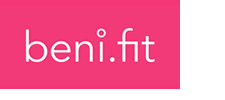How to Address Unique Needs and Preferences of Different Generations Through Company Benefits and Wellness Programs
To address the unique needs of different generations in the workforce, we’ve gathered seven insightful tips from CEOs and Founders. These experts share their best advice, ranging from designing inclusive and practical benefits to implementing a modular benefits system. Dive into their wisdom to enhance your employee benefits and wellness programs.
- Design Inclusive and Practical Benefits
- Offer Flexible Benefits Choices
- Use Surveys to Understand Employee Needs
- Integrate Mental Health Support Across Generations
- Optimize Benefits Based on Age and Goals
- Create Customizable Wellness Programs
- Implement a Modular Benefits System
Design Inclusive and Practical Benefits
Each generation has its own preferences with benefits. Gen Z is all about inclusivity. Wellness programs focused around gym memberships, for example, risk accusations of ableism and exclusion. A better choice might be a flexible pass that includes access to yoga and meditation classes.
Benefits are only good insofar as they’re practical and usable, so think about your entire workforce and make sure you’re accommodating everyone. Things to consider include parenting roles, neurodiverse employees, travel distances, and the chronically ill. Otherwise, your benefit package looks more like lip service than genuine outreach, and Gen Z employees will be turned off.
 Linn Atiyeh
Linn Atiyeh
CEO, Bemana
Offer Flexible Benefits Choices
It’s very important to let workers choose what benefits they need most. This way, we address the needs of different generations with little trouble. To do this well, we offer a wide range of benefits. This way, everyone can find something that suits them.
Younger employees might prefer benefits like gym memberships or additional days off, while older staff might appreciate health insurance or retirement plans more. The key is to be flexible and open. We have to remember that everyone is unique and has their own needs, regardless of their age.
 Martin Potocki
Martin Potocki
CEO, Jobera
Use Surveys to Understand Employee Needs
To my knowledge, employee requirements have drastically changed over the years, and sometimes we, as the employer, don’t have all the answers—their needs and requirements are quite different, as are the solutions they have access to.
When we realized our staff were not in a space where they felt valued and productive, we did our research and deployed employee engagement surveys. This gave us an excellent idea as to what issues were affecting our employees—which were a lack of learning opportunities, lack of insight into the company’s operations, and that they were also struggling with their mental health because of remote working.
This was troubling to us, and we earnestly attempted to address these issues. We implemented learning opportunities for our team; we gave them more access to our meetings on the development processes, and we also made wellness opportunities available for them.
 Darshan Somashekar
Darshan Somashekar
Co-Founder, Hearts Land
Integrate Mental Health Support Across Generations
Back then, a powerful approach was to strongly emphasize mental health support. Recognizing that mental well-being is a universal concern transcending age, it becomes crucial to integrate initiatives that address the unique challenges faced by different generations.
For instance, younger employees navigating financial stress and striving for rapid career growth can greatly benefit from access to counseling, stress management resources, and mindfulness practices. Meanwhile, the older workforce cohort might find value in offerings such as retirement planning guidance and strategies to achieve work-life balance as they navigate the later stages of their careers.
By thoughtfully incorporating these mental health-focused elements into your programs, you create an inclusive and empathetic environment that resonates deeply with every generation, fostering a workplace culture where well-being thrives.
 Bill Lyons
Bill Lyons
CEO, Griffin Funding
Optimize Benefits Based on Age and Goals
The phrase “investing for your age” refers to the idea that investment strategies should change as one ages. The way money is invested at 25 differs from the approach at 65. At Penny Finance, this concept applies to benefits as well. It’s understood that total rewards and benefits leaders may not have the capacity to tailor a benefits package to the unique needs of every individual. However, it’s believed that employees can be given the resources to maximize their benefits at every age through financial-wellness platforms.
One crucial piece of information every employee should have is whether they are on track for retirement. Financial-wellness platforms can provide education on what it means to be retirement-ready, and how to optimize their 401(k), Roth, and/or pension based on age, income, and personal goals.
Periodic surveys of employees are also recommended to identify their top financial priorities and pain points. This ensures that the benefits budget aligns with tools that address their concerns, such as debt, healthcare costs, and 401(k) matches.
 Crissi Cole
Crissi Cole
Founder, CEO, Penny Finance
Create Customizable Wellness Programs
People of different ages typically have different desires, healthcare conditions, and priorities. So, in multi-generational workplaces, a one-size-fits-all formula will not work when planning any wellness program. The best solution is to customize your wellness program to match the requirements of all age groups.
For example, you can arrange one-on-one meetings for workers with those in charge. These include guidance counselors, insurance experts, and wellness coaches. In addition, you can organize an online questionnaire for them to add their health and fitness details directly. Make it customizable so employees can add and revise their data when needed.
Those providing their services will keep note of the individual assessment details. They will create personalized dietary charts, workout routines, mental health recommendations, and health insurance plans for employees of many age groups.
 Lyle Solomon
Lyle Solomon
Principal Attorney, Oak View Law Group
Implement a Modular Benefits System
In an era where generational diversity is the norm in the workplace, a rigid, one-size-fits-all benefits structure no longer suffices. We’ve pivoted to a modular benefits system, allowing employees to personalize their packages. It’s about resonance—millennials might prioritize mental well-being apps, while baby boomers may lean towards financial planning.
By providing options, we’ve not only catered to unique generational needs but also cultivated a sense of ownership and inclusivity, ensuring every age group feels acknowledged and cherished.
 Curran Van Waarde
Curran Van Waarde
Founder, CallScaler
Submit Your Answer
Would you like to submit an alternate answer to the question, “How do you address the unique needs and preferences of different generations within the workforce when designing employee benefits and wellness programs? Give your best tip or insight for others to learn from.”
Related Articles
- Benefit Packages: How to Support Employees With Unique or Special Needs
- 7 Steps to Build an Unbiased Benefit Strategy – Beni.fit
- Advice for Small Businesses on Adding Employee Benefits for the First


